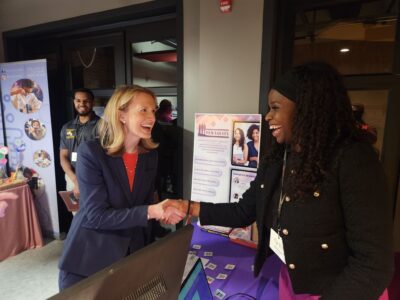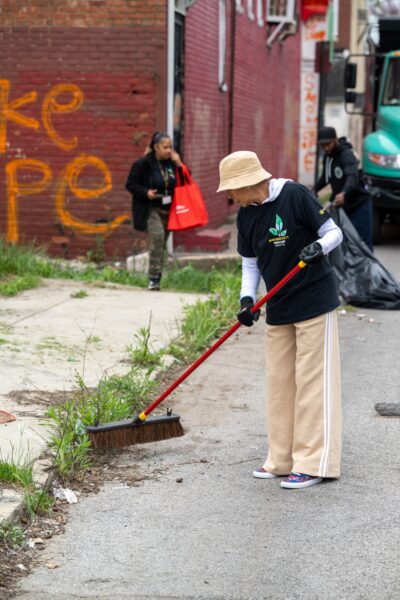Most people would find it difficult to do their job without their smartphones and other tech-enabled functions these days. But for people with disabilities, the tech can be the difference in them getting the job in the first place, whether it’s a program that helps take notes in college, or a tool that helps with speech.
“It can really be everything for people,” said Daphni Steffin, the Director of Assistive Technology at The Arc Baltimore. “If a person has a barrier and they have a goal in life, a lot of times technology is the key to helping them achieve that goal.”
Proud to support @TheArcBaltimore Learning Lab to provide training to individuals w/ intellectual & developmental disabilities @TheArcUS pic.twitter.com/CQZ83vF8l5
— Comcast Beltway (@ComcastBeltway) November 14, 2016
It can also be the difference between living independently, or with a caretaker.
The Arc Baltimore recently got a boost to its education efforts around technology. Earlier this month, Comcast awarded the Arc Baltimore a $10,000 grant to expand training and assessment for using the technology, which will help the organization reach 120 people through learning labs in the coming weeks, Steffin said.
We previously profiled Comcast’s efforts to include accessibility features in its X1 remote.
During a conversation, Steffin told us about a number of high- and low-tech solutions that the organization introduces for people. Here are five that stood out:

GoTalk Pocket.
- GoTalk Pocket. A wearable communication device that helps people say their most-used phrases. Users press a button and it speaks, giving people who have speech and language impairment a voice. It has room for 30 messages.
- Bellman Personal Amplifier. For people with trouble hearing, this tool has tech that filters out the noise around them and brings out specific words to make it easier to hear. The tool can be used by placing it on a table.
- Liftware. For people with hand tremors from Parkinson’s disease, this attachment helps stabilize utensils to help people eat. The tool can sense a person’s tremor, and stabilize it.
- WordQ. This software predicts words as a person is typing, by getting an idea of what words are used. Along with typing more quickly, the ability to see the words as they are typed also helps users learn vocabulary.
- Pictello. An app that lets users create talking photo albums is a great way to show people how to do specific tasks, Steffin said. Walking through visually and step-by-step, the app can empower people to something like make a peanut butter and jelly sandwich on their own.
Join the conversation!
Find news, events, jobs and people who share your interests on Technical.ly's open community Slack

Baltimore daily roundup: Film fest spotlights cinema's immersive frontier; over $1M for a wellness startup; $2B to rebuild the Key Bridge

Baltimore daily roundup: Key takeaways on the local tech ecosystem; a video editor's path to working with Keke Palmer; BCIT's new podcast

Baltimore daily roundup: 20 people building Baltimore's innovation community; a local startup's $15K win; the USMC's new tech office


